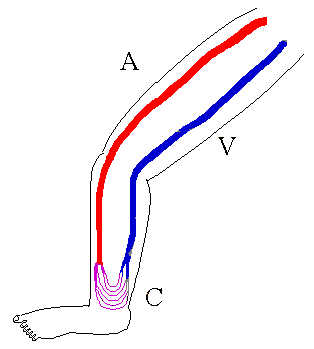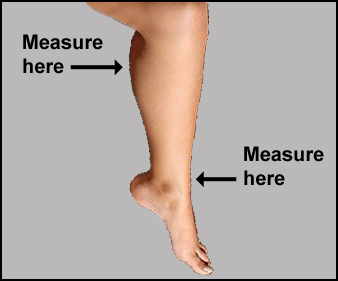1. "Left Main Coronary Artery" blockages are relatively rare. In my personal experience as a medical resident, during which time I admitted dozens of patients to the hospital for coronary angiography/bypass, not one had an occlusion of the "Left Main Coronary Artery".
2. Patients with both severe heart failure and significant coronary artery blockages are only a small minority among those who receive coronary artery bypass in the United States. In my personal experience as a medical resident, during which time I admitted dozens of patients to the hospital for coronary angiography/bypass, very few had both severe heart failure as well as significant coronary artery occlusions.
3. The great majority of patients who will undergo coronary artery bypass will NOT derive the main benefit which they think they're going to get: prolongation of life, and prevention of heart attacks. That's right, folks. The operation generally does not work, if the definition of "work" is "prevention of heart attacks". Most of the time, the operation does NOT prevent heart attacks.
When coronary artery bypass was invented, it was hoped and believed that it would prolong life in cardiac patients. But it didn't. Since its origin, the operation has been the most intensely studied medical procedure in history. The statistics which have been compiled are voluminous. It became quickly obvious, at the outset, that the operation did not prevent heart attacks, and that's what I was taught in medical school.
Now, over 30 years later, the statistics are even more voluminous, but they still show the same thing: the operation doesn't work!
4. In spite of this, every day in America, angina patients are told that if they don't get this operation, they will die. In the great majority of cases, this is a bold-faced lie.
5. In America, where coronary surgeons can easily make $50,000 per day (that's "per day", not "per year"), massive numbers of coronary bypasses are performed every year. The number is surely in the hundreds of thousands, and possibly as many as a million. In Europe, where many surgeons can earn only a few hundred dollars for doing the same operation, the number of coronary bypasses done is only a small fraction of the number done here in America. Do you think money has anything to do with this?
6. If the operation doesn't save lives, then why is it done? Because it relieves chest pain. The angina, or chest pain of coronary artery disease, is regularly relieved by surgery. But there's an unanswered question: "Why is the pain relieved?". This question arises from the well-established fact that the grafts of one-out-of-seven patients are found to have failed after a year. This means that the bypass in the drawing above (the segment marked "G") has closed off. The coronary circulation, at that point, should have either reverted to its original sick pattern, or maybe even become worse. And yet the majority of these patients still feel fine! Why?
7. It has been proposed that the explanation for the relief of chest pain by the operation may have nothing at all to do with circulation! You see, in order to get to the heart, the surgeon has to cut through the "pericardium", the sheath that surrounds the heart. And that's where all the nerves are. So the theory has arisen that maybe the operation relieves chest pain because the nerves are all cut.
8. It wouldn't be a bad thing to relieve a patient's chest pain by cutting the nerves to the heart, but that doesn't require a prolonged hospital stay -- it could probably be done on an outpatient basis! Moreover, it surely does NOT require "saving" veins!!
9. There is considerable evidence that patients with varicose veins have less chance of needing a coronary bypass than the average American. The statistics supporting this are from this very office. We proved unequivocally that people with varicose veins have lower blood pressure, a disease which is strongly linked statistically with cardiovascular death. We published this in the peer-reviewed medical journal Phlebology (volume 4, pp.191-196, 1989).
In the same study, we showed also that people with varicose veins were much less likely to have angina than age-matched people from the general population. It was not possible for us to prove this as a hard statistic. Nevertheless, the evidence was suggestive of a significant negative correlation between varicose veins and coronary artery disease.
10. The conduit (i.e., "tube") usually used in coronary artery bypass is the saphenous vein. For years, certain observers have been asking "Why?" After all, it's not a good graft!
The best graft is the "internal mammary artery", a small artery which runs down the inside of the rib cage. The internal mammary artery is, or course, an artery, not a vein. And the life-span of arteries, when used as grafts in the arterial system, is much longer than the life-span of vein grafts in the arterial system. The life-span of a vein, when used as a conduit in coronary artery bypass, is in the 5-10 year range. But an artery can last the lifetime of the individual in some cases.
Why, then, are saphenous veins used so much in coronary artery bypass? Because they are easier to get at. It's a matter of convenience! Dissecting free the internal mammary artery from the inside of the rib cage takes longer. And when a surgeon is trying to make $50,000 a day, time is of the essence.
If a patient really needed a coronary artery bypass, and if the saphenous vein was not available, then the surgeon might be forced to use the internal mammary artery. Thus, the patient might actually be better off, not worse!
11. It's a known fact that, compared to healthy veins, varicose veins make poor grafts. They're too big, they're too irregular in shape, and their inner linings are often scarred by phlebitis. There's no doubt that they fail as grafts faster than normal veins do.
Therefore, many vascular surgeons make little or no effort to save varicose veins, when the veins are causing health problems. But others disagree, noting that although they make poor grafts, they can still be used in desperate situations. Are you going to be in a desperate situation?
12. It's a well-established fact that varicose veins invariably recur. That is, new ones always grow in after the old ones are treated. The phenomenon of recurrence has been studied in depth by the British surgeon John Hobbs, mentioned earlier in this report, whose publication on the subject has remained, for 20 years, the standard of knowledge in the field.
Within six years after treatment for varicose veins, most patients have required further treatment. The figure for surgical patients is around 85%. For injection patients, it's at least 95%. That means that unless a patient is going to need coronary bypass within the next 6 years, there's almost no chance of there not being another varicose vein to use as a graft.
Therefore, the only patients in whom "saving" the saphenous vein is an urgent consideration are patients in whom the significant possibility of a sudden need for coronary bypass can be foreseen within the next 6 years. On the other hand, if you are a young, healthy person with a normal cholesterol level, no chest pain, a normal electrocardiogram ("EKG"), and no family history of early cardiac death, then saving your varicose veins for use as bypass grafts is probably pointless.
13. Recent studies from our own office have shown that large varicose saphenous veins never completely disappear after treatment. They shrink to a size so small that they can be neither seen nor felt. After they have shrunk thusly, they no longer have any measurable harmful effect on the circulation. And yet, within a year or two, sensitive ultrasound studies invariably show signs suggesting that the shrunken saphenous veins are once again carrying blood. It's a tiny trickle at first. The patient, at this early stage, rarely has any awareness of the recurrence. But by 5-6 years, the vein has grown back, and can again be used as a bypass graft, if the surgeon is inclined to use varicose veins at all.
This would have been regarded as a very negative aspect of injections only a few years ago, but now, in the era of bypass surgery, it has turned out to be a potential advantage! You can get your veins treated now, and years down the line, when they grow back, you can get your coronary artery bypass!
Some surgeons would object, saying that a recurrent saphenous vein will make a poor bypass graft. They're right. But the original one would have made a poor graft also.
14. Worst case scenario: You need a bypass; the saphenous veins have been injected, and, for some reason, they either haven't grown back, or they just can't be used. What do you do?
- First of all, there's that internal mammary artery, mentioned above.
- Then, there are other veins. Arm veins are usually too small, but in some patients, they're large enough. There are other leg veins which can be used, principally the "short" saphenous veins behind the knees.
- There are synthetic grafts which can be used. They work fine, but they don't last as long. It's not the best way to go, but it's something which can be done when no real vessels are available.
- There's a treatment called "endarterectomy", in which the clogged artery is simply opened up and "cleaned out". No graft is put in. My own mother, who (without consulting with me) got a coronary artery bypass operation, needed 5 grafts, and they only could find 4 vessels. So they did an endarterectomy on the fifth.
- There's balloon angioplasty, which becomes more popular all the time. In this procedure, a balloon is blown up in the clogged vessels, which forces them open. It's a relatively simple procedure, requiring no surgery. The balloon is at the end of an intravenous catheter, which is threaded in through an arm vein.
Balloon angioplasty doesn't hold up as long as surgery, but it's relatively non-invasive, and can easily be repeated a few years later, if necessary.
- Finally, there's laser angioplasty, in which the clogs are burned out with a laser. It's otherwise just like the balloon procedure. The laser light is sent through a catheter which is threaded in through an arm vein.
Critics of laser angioplasty say it doesn't hold up as long as surgery, which is true. But, like its cousin, balloon angioplasty, it can readily be repeated in a few years, if necessary. Laser angioplasty is not done in most medical centers. I'm not sure why. In those centers where it is done, its advocates praise its merits highly.






